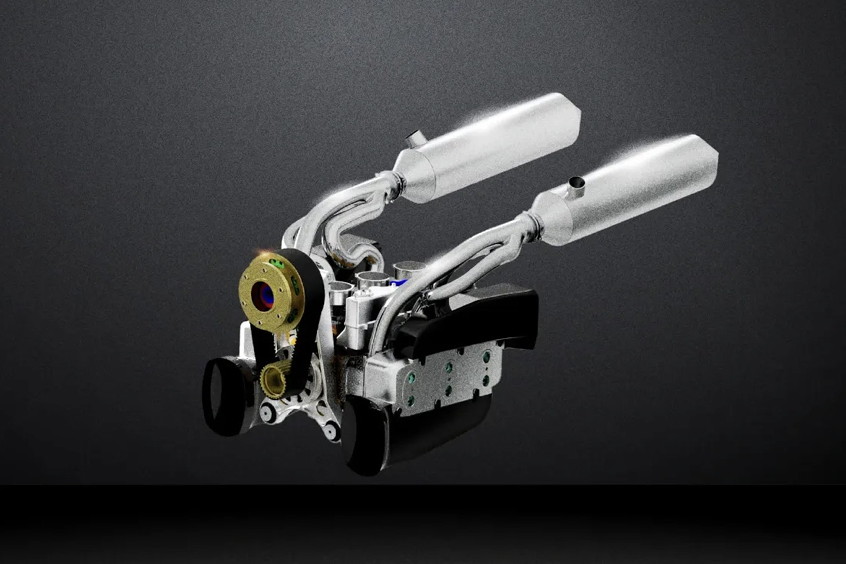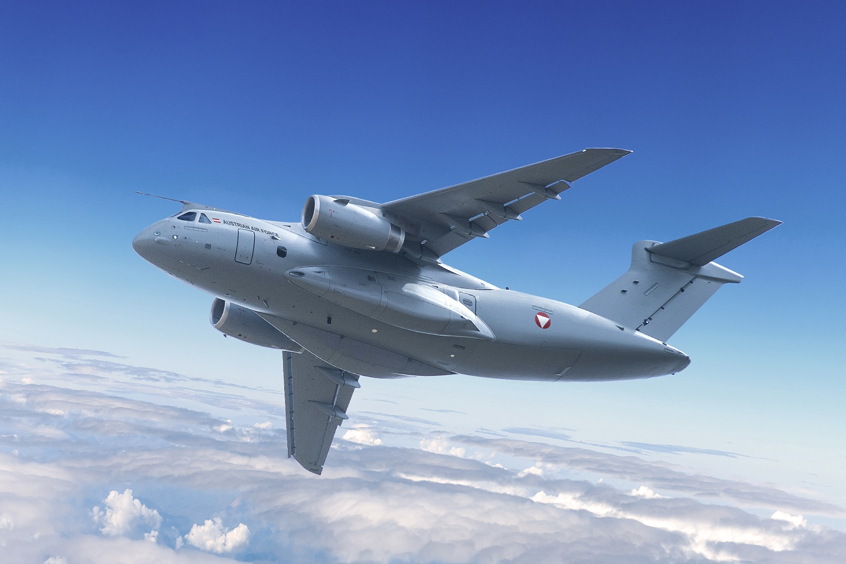A major investment programme at the Airbus factory in Filton, near Bristol, has seen the construction of a new, flexible manufacturing system (FMS) based on three Makino MAG3.H five-axis, horizontal-spindle machining centres (HMCs). They are linked by a rail guided vehicle and served by a nine-pallet handling and storage system. In a separate project, a twin-pallet Makino MCD2016 five-axis HMC has been installed. Both systems were supplied as turnkey packages by NCMT, the UK agent for the Japanese machine builder.
A sequel to the £16.5 million Airbus A380 rib manufacturing facility completed at Filton in 2002, which employs larger MAG4 HMCs from Makino, the latest projects are valued at over £5 million for the high-speed MAG3.H FMS and nearly £2 million for the stand-alone MCD2016, including factory modifications. The new systems produce smaller ribs for the single-aisle A320 family, the FMS being employed for machining 10 types of interspar wing rib from solid aluminium billets and extrusions, while the other MCD2016 is devoted to machining the main gear rib from an aluminium forging.
Said Jeff Price, Project Manager Machining Facility at Filton, "Each A320 interspar rib blank enters the Makino FMS and emerges fully machined, having undergone two or three machining cycles on different MAG3.Hs, each of which is capable of carrying out all of the required operations on any rib.
"Aircraft build rates have increased steadily over the past five years. By 2001 it was already apparent that our previous rib production process involving multiple set-ups on two or three conventional HMCs was no longer sustainable, as it involved significant work-in-progress between operations and resulted in much longer floor-to-floor times."
So in 2002, the first high-speed MAG3.H was installed as a stand-alone machine and a significant increase in productivity was observed. Working envelope is 3m x 1.8m x 1.5m, a little larger than the standard MAG3 model, and the machine was fitted with a 120-tool magazine. With its 3m x 1.5m pallet size, the MAG3.H fills a gap in the inventory of HMCs at Filton, according to Mr Price, who explained that the conventional machines have typically 2m x 1m pallets and the MAG4s have 4m x 2m pallets.
The MAG3.Hs have the same 60 kW, 30,000 rpm, HSK63 spindle as the MAG4s, allowing high-speed machining to be exploited without tying up the larger machines for producing relatively small A320 components.
The second MAG3.H was delivered in 2003 and positioned adjacent to the first, with a rail guided vehicle (RGV) linking the machining areas with a work-set station and an in-line magazine where nine machine pallets are stored, each orientated vertically. A third identical HMC has since been added, which became operational in May 2005. As it is positioned on the other side of the rails, the machine is fed with pallets via an interface station, the RGV having already been configured as a double-sided vehicle. There is a possibility of extending the FMS by adding one or two further machines.
A considerable degree of technology transfer has taken place from the MAG4 system to the MAG3.H FMS. For example, as with the larger system, the work-set station allows a pallet to be swivelled through 90 degrees, enabling ribs to be conveniently fixtured horizontally, after which the pallet is swung back into the vertical plane for presentation to the machine spindles. Identical tools are used in the two systems, although they are not interchanged. Program generation is common and the cycles can run on either size of machine.
Orchestrating the cell is a computer controller that interfaces with the machines' Fanuc CNCs configured with the Makino Pro3 interface. The status of the machines, as well as that of the components fixtured on the pallets in the store, is known at all times by the controller, which schedules and prioritises work through the system.
The controller also monitors the life of the cutters, ensuring that sister tooling is available and that replacements are made as necessary. ID chips are attached to each tool to assist in this process. Gewefa heat-shrink toolholders ensure smooth running at high speeds, which is particularly important as the full 30,000 rpm capability of each machine spindle, designed and built by Makino, is used for the majority of the machining cycles. All tools are preset, the solid carbide cutters in their toolholders being individually balanced to 2.5g before being placed manually in the magazines.
Wings for all Airbus aircraft are designed at Filton using Catia CAD. Advanced computer-aided manufacturing software with feature-based recognition capabilities is employed to generate automatically the most efficient 5-axis machining strategies for removing large amounts of metal from solid billets, often leaving very thin walled features. ICAD© software from Knowledge Technologies International acts as the 'brain' for the design and manufacturing process, storing the required knowledge and best practices relating to design intent, functionality, engineering and manufacturing rules, standards, safety codes, legislative compliance and other criteria.
Whereas interspar ribs have always been manufactured by Airbus, some components are outsourced, such as the A320 main gear rib, a cube-shaped part that attaches the undercarriage to the lower wing. The gear rib is of strategic importance as Airbus cannot start building a wing without it, hence the installation of the 2m x 1.6m x 1.3m Makino MCD2016 to bring some of this work in-house. It became operational at the beginning of October 2005.
| Contact details from our directory: | |
| Airbus S.A.S. | Airframer |
| EOS Electro Optical Systems Ltd | Laser Tooling, Additive Manufacturing |
| Related aircraft programs: |
| Airbus A320 |
| Related directory sectors: |
| Tooling |
| Computer Integrated Manufacturing |
Weekly news by email:
See the latest Bulletin, and sign up free‑of‑charge for future editions.

EDGE launches Powertech for high-performance aero engines
GE uses exascale supercomputers for Open Fan engine

Embraer begins assembly of Austria’s first C-390
